#SearchAd
Text
I will setup Google ads campaign for chiropractors to get patient phone calls
#GoogleAds#GoogleAdsCampaign#GoogleAdsSpecialist#GoogleAdsExpert#GoogleAdWords#GoogleAdsManager#GoogleAdsPPC#GoogleAdWordsPPC#PPC#SEM#PayPerClick#GoogleAdsSetup#GoogleCampaign#AdWordsPPC#GooglePPC#GoogleSearch#Advertising#GoogleAdWordsSetup#ManageGoogleAds#PPCCampaign#GoogleSearchAds#SearchAd#AdCopy#AdText#GoogleManagement#GoogleTagManager#ConversionTracking#RemarketingAd#TextAds#KeywordSearch
0 notes
Text
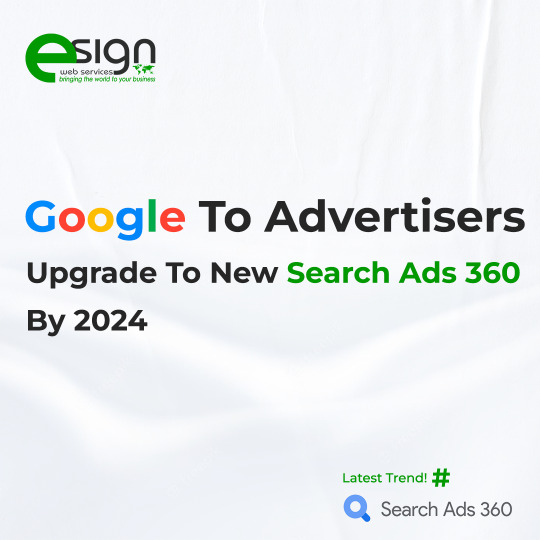
Google announced the latest improvements to Search Ads 360 and encouraged advertisers to transition to the new platform before April 2024.
What are your thoughts on the same?
#google#googleupdate#searchengine#advertisers#seachengineoptimization#searchads#searchads360#digitalmarketing#digitalmarketingexperts#digitalmarketingagency#esignwebservices
2 notes
·
View notes
Text
youtube
5 notes
·
View notes
Text
Google Ads Expert, Google AdWords Expert, AdWords Expert, Google Ads Specialist, PPC Specialist
I am a Google Ads Expert, Google AdWords Expert, AdWords Expert, Google Ads Specialist, and PPC Specialist. My passion for helping maximize ROI through PPC Advertising.
I can help achieve your goal. My ultimate goal is to increase your ROI by delivering high-quality traffic at the lowest possible CPC.
Check My Gig on Fiverr: https://www.fiverr.com/freemostafizur/do-advanced-level-setup-manage-google-ads-ppc-display-adwords-campaign
Check My Project On Upwork: www.upwork.com/freelancermostafizur
In the digital age, online advertising has become a crucial component of a successful marketing strategy. Among the various advertising platforms available, Google Ads stands out as one of the most powerful tools for businesses to reach their target audience effectively. To make the most of this platform, the expertise of a Google Ads Expert, also known as a Google AdWords Expert, AdWords Expert, Google Ads Specialist, or PPC Specialist, becomes invaluable. In this article, we will explore the vital role of a Google Ads Expert and how they help businesses maximize their return on investment (ROI) through pay-per-click (PPC) advertising.
Understanding Google Ads:
Google Ads is an online advertising platform developed by Google, enabling businesses to display ads on Google's search engine results pages, partner websites, YouTube, and other platforms. It operates on a PPC model, where advertisers pay only when their ads are clicked. With billions of daily searches, Google Ads offers an immense opportunity for businesses to connect with potential customers actively searching for their products or services.
The Role of a Google Ads Expert:
A Google Ads Expert is a professional with specialized knowledge and experience in creating, managing, and optimizing advertising campaigns on the Google Ads platform. Their primary objective is to drive targeted traffic to a business's website, increase conversions, and ultimately deliver a positive ROI. Here are some key responsibilities of a Google Ads Expert:
Keyword Research and Strategy:
A Google Ads Expert conducts comprehensive keyword research to identify the most relevant and high-performing keywords for a business's advertising campaigns. They develop a solid keyword strategy to ensure ads are shown to the right audience at the right time, maximizing the chances of conversions.
Ad Creation and Optimization:
Creating compelling and persuasive ad copy is essential to attract clicks and drive conversions. A Google Ads Expert crafts engaging ad headlines, descriptions, and calls-to-action that resonate with the target audience. They continually optimize ad performance by conducting A/B testing, refining ad formats, and implementing strategies to improve click-through rates (CTR) and Quality Scores.
Campaign Management:
Managing Google Ads campaigns involves setting budgets, selecting targeting options, monitoring ad performance, and adjusting bids. A Google Ads Expert closely monitors key metrics like impressions, clicks, conversions, and cost-per-click (CPC) to ensure campaigns are performing optimally. They make data-driven decisions and employ various optimization techniques to improve campaign performance.
Landing Page Optimization:
A crucial aspect of successful PPC advertising is directing users to a well-designed and optimized landing page. A Google Ads Expert analyzes landing page performance, ensures it aligns with ad messaging, and optimizes it for better user experience, conversion rates, and Quality Scores. They employ strategies like A/B testing, improving page load speed, and optimizing forms to maximize conversions.
Continuous Monitoring and Reporting:
A Google Ads Expert closely monitors campaign performance, tracks key metrics, and generates comprehensive reports to provide insights into campaign effectiveness. They identify areas of improvement, highlight trends, and make data-backed recommendations to optimize ad spend and achieve better ROI.
Conclusion:
In the ever-evolving landscape of online advertising, a Google Ads Expert plays a pivotal role in helping businesses harness the full potential of the Google Ads platform. Their expertise in keyword research, ad creation, campaign management, landing page optimization, and data analysis ensures that businesses achieve maximum ROI from their PPC advertising efforts. By staying up to date with the latest trends and leveraging their experience, a Google Ads Expert enables businesses to reach their target audience, increase brand visibility, and drive conversions in a cost-effective manner. Collaborating with a skilled Google Ads Expert can be a game-changer for businesses seeking to thrive in the digital marketplace.
Visit My Website: www.freelancermostafizur.com
Visit My Fiverr Profile: www.fiverr.com/freemostafizur
Visit My Upwork Profile:https://www.upwork.com/freelancers/freelancermostafizur
Visit My Facebook Page: https://www.facebook.com/googleadsexpertppcexpert

#googleadsppc #googleppcads #searchads #googleadsexpert #GoogleAdWordsExpert #AdWordsExpert #googleadsspecialist #ppcspecialist #ppcadvertising #googleadsexpert #googleadsconsultant #ppcads
#googleadsppc#googleppcads#searchads#googleadsexpert#GoogleAdWordsExpert#AdWordsExpert#googleadsspecialist#ppcspecialist#ppcadvertising#googleadsconsultant#ppcads
2 notes
·
View notes
Text
14 Tips for Effective Pay Per Click Advertising
Discover the secrets to successful Pay Per Click advertising with our 10 expert tips. Maximize your online marketing efforts and boost your ROI today.
What is Pay Per Click Advertising?
Pay-per-click (PPC) is a form of online advertising where advertisers pay a fee each time their ad is clicked. This model allows businesses to drive traffic to their websites by paying for visits, rather than relying solely on organic traffic. Pay Per Click advertising campaigns are typically managed through platforms like Google Ads or Bing Ads, where advertisers bid on keywords relevant to their target audience.
The Basics of Pay Per Click Advertising:
Pay Per Click Advertising is used for all types of campaign goals, including:
Increasing sales
Generating leads
Promoting brand awareness
Pay-per-click advertising revolves around the concept of relevance. Individuals are actively seeking particular products, services, or information at various points in time. Advertisers possess the capability to display a tailored advertisement precisely when this search is taking place. For instance, when a user looks up “Loafer Shoes For Men,” an advertiser can present an ad specifically addressing “Loafer Shoes For Men.”

Main Platforms:
Google Ads:
Google Ads, the largest pay-per-click platform, operates on Google, Search Partner sites, and Display Network sites. Since its launch in October 2000, Google Ads has undergone numerous transformations over the past 17 years. It caters to a wide range of businesses, from small enterprises to Fortune 500 companies.
Microsoft Advertising:
Microsoft advertising, similar to Google Pay Per Click Advertising, operates as a Pay Per Click advertising platform that showcases ads on the Microsoft and Yahoo networks. It also incorporates Search Partners. Microsoft advertising is primarily focused on keyword-based advertising. In 2017, Microsoft Advertising had 137 million unique desktop searchers on the Bing Network.
Account Structure:
Campaigns and Ad Groups:
The process commences with advertisers selecting keyword themes and establishing individual campaigns. To illustrate, a Pay Per Click advertising professional may create a campaign centered around the theme “Coffee Tables”. Within this campaign, there are categorized subgroups referred to as ad groups. These ad groups may consist of:
Oval Coffee Tables
Long Coffee Tables
Round Coffee Tables
Keywords:
Each keyword must be assigned a specific match type that determines the queries for which ads will be displayed. There are a total of seven match types for keywords.
Exact – The query must be entered exactly as it is, without any variations or changes.
Exact (Close Variant) – The query must be entered exactly as it is, including any misspellings or variations.
Phrase – The query must be typed in the correct order, regardless of any additional terms before or after it.
Phrase (Close Variant) – The query must be entered in the correct sequence, regardless of any extra terms preceding or following the query. The query may contain misspellings or alternative variations.
Broad – The query can be entered in any sequence and may display advertisements for related searches.
Modified Broad – The Modified Broad match type allows for queries to be entered in any sequence, as long as they include terms with a plus sign.
Broad (Session-Based) – Is a form of broad match that considers the user’s search session and takes into account other queries made by the user.
Here is a table of the match types, keywords, and potential search queries.
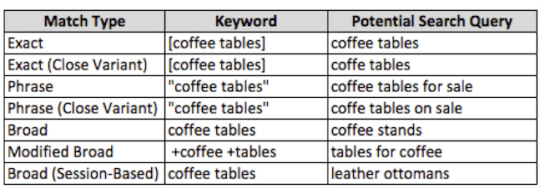
Negative Keywords:
Negative keywords can be utilized to eliminate unqualified traffic in addition to positive terms. For instance, if someone searches for “free coffee table,” they are not likely to make a purchase. By including “free” as a negative keyword, the advertiser’s ad will not be displayed when a query with this term is entered. In the case of a company selling high-end products, negative keywords such as “bargain” or “cheap” may be effective in filtering out irrelevant searches.
Audiences:
Audiences consist of categorized users and are commonly utilized in remarketing strategies. They can be tailored according to factors such as pageviews, duration of site visits, number of pages visited, and other criteria. Similar to keywords, audiences are targeted based on their relevance, with advertisers potentially bidding higher to target specific groups like shopping cart abandoners compared to homepage visitors.
Pay Per Click Advertising Copy:
Expanded Text Ads:
After creating ad groups and selecting keywords, it is time to craft the ads. The ads must incorporate the targeted keyword theme, highlight any value propositions, and include a compelling call to action.
The structure and character limits for Google Ads text ads are outlined below.
Headline 1: Limited to 30 characters
Headline 2: Restricted to 30 characters
Description Line: Maximum of 80 characters
Path 1: Up to 15 characters
Path 2: Up to 15 characters
Advertisements must refrain from using too much capitalization, punctuation, or deceptive claims. It is important to remember that the display URL will merge the root of the final URL with Path 1 and Path 2.
It is significant to mention that both Microsoft and Google have replaced traditional Text Ads with Expanded Text Ads. Although Google Ads still allows the use of traditional ads, advertisers are no longer able to create new versions of this format. The traditional ad format included a 25-character headline and two 35-character description lines.
Every ad group should contain at least two ads for testing purposes. Here is an example of an “oval coffee tables” ad:
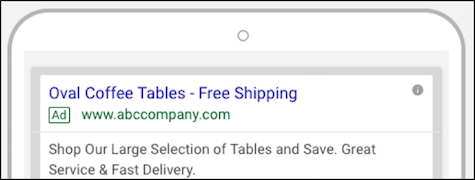
Ensure that your ad copy is compatible with both desktop and mobile devices by writing a single version that will be automatically adjusted for both formats. Keep in mind that the copy will be displayed on both platforms, so make sure it is optimized for both desktop and mobile users.
After clicking, visitors will be directed to a landing page that extends the advertisement’s message. This designated page, known as the landing page, will showcase a variety of oval coffee tables accompanied by information about complimentary shipping.
Product Listing Ads (PLAs):
Product titles, images, and prices are featured in square units called Product Listing Ads, which are commonly used in eCommerce Pay Per Click advertising campaigns.

Google product feeds are used by PLAs, which need to be linked to a Google Merchant Center account. On the other hand, Microsoft Advertising has a comparable feature called Product Ads, which also necessitates the use of a Bing Merchant Center account.
Image Ads:
Advertisers have the option to launch Display Network campaigns featuring image ads, which are displayed on numerous sites within and around the content of the Display Network.
200 × 200
240 × 400
250 × 250
250 × 360
300 × 250
336 × 280
580 × 400
120 × 600
160 × 600
300 × 600
300 × 1050
468 × 60
728 × 90
930 × 180
970 × 90
970 × 250
980 × 120
320 × 50
320 × 100
Settings:
Pay Per Click Advertising Campaign Types:
Search Network – The Search Network is the most frequently used targeting option, comprising Google.com and Google’s Search Partners like aol.com, amazon.com, and others. It primarily focuses on keyword-based Pay Per Click advertising, displaying ads when users enter relevant search queries.
Pay Per Click Advertising Display Network – The Display Network comprises numerous websites that display Google text, image, and video ads within their content. Instead of relying on traditional keyword targeting, these ads focus on audiences and demographics. For instance, a user browsing a blog about coffee table history may come across an ad related to coffee tables, increasing brand awareness even if they are not actively looking to make a purchase.
Search Network with Display Opt-In –Is a blend of both networks, replacing the Search Network with Display Select in the new Google Ads interface. By creating a standard Search Network campaign and choosing to opt in to the Display Network, advertisers allow Google to decide the optimal time and place for ad performance, relinquishing some control. While it is recommended to separate campaigns by network, experimenting with Search with Display Opt-In is advisable.
Shopping: Product Listing Ads – Google and Microsoft display Product Listing Ads (PLAs) for shopping purposes. To create shopping campaigns on Google Ads, advertisers need to submit a product feed to Google Merchant Center. Advertisers can then create product groups and bid on different feed attributes such as price, brand, and availability.
Brand
Category
Condition
Item ID
Product Type
Custom Attributes
Shopping campaigns do not utilize keywords; instead, search engines match user queries to the most relevant product. Therefore, it is crucial to maintain accurate information, clear titles, and descriptions for all products.
Pay Per Click Advertising Device Targeting:
Pay Per Click advertising can be shown across all devices, including:
Desktops/Laptops
Tablets
Mobile Devices
Search engines treat desktops/laptops and tablets as similar platforms, applying the same bid to both. However, mobile devices have the option for bid modifiers. For instance, if the bid is $1.00 and the mobile bid modifier is set to -50%, the bid on mobile devices would be reduced to $0.50. Conversely, a bid modifier of 150% would increase the mobile bid to $1.50.
Pay Per Click Advertising Location Targeting:
PPC targeting offers a high level of granularity, reaching down to the zip code level, allowing advertisers to specify where their ads will appear. For instance, a campaign can be set up to exclusively target Iowa, ensuring ads are only shown in that specific location.
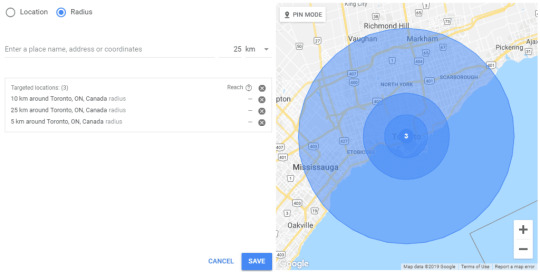
Pay Per Click Advertising Scheduling:
Advertisers can choose specific times to run ads, enabling eCommerce campaigns to run 24/7 while brick and mortar stores can display ads only during business hours, making ad scheduling a convenient way to manage when ads are shown. Bid modifiers can also be adjusted for days and hours, such as increasing bids by 20% on weekends for higher revenue or decreasing bids by -80% during low-quality traffic periods like midnight to 4 AM.
Pay Per Click Advertising Budget:
A daily budget is allocated for each individual campaign, and it is important to create budgets that align with the goals of the account.

Pay Per Click Advertising Delivery Method:
Two choices are available for ad delivery: standard and accelerated. The standard method displays ads evenly over the course of the day, suitable for advertisers with budget constraints. On the other hand, the accelerated method shows ads until the budget runs out, ideal for advertisers without budget limitations who want their ads to appear for every query.
Pay Per Click Advertising Delivery:
There are two options for which your ads will be delivered by Google:
Optimize – Delivery is based upon ads expected to produce higher click volume.
Rotate indefinitely – Ads are delivered more evenly into the ad auction, but they are not optimized toward any kind of goal like clicks or conversions.
Technical Pay Per Click Advertising:
Pay Per Click Advertising Conversion Tracking:
Advertisers possess the capability to establish conversion objectives to assess the performance of their accounts. Both platforms offer code snippets that can be inserted on crucial pages, typically order confirmation or thank you pages. Advertisers can ascertain if ad clicks are resulting in conversions.
Google Ads allows many types of conversion tracking, including:
Webpage
Mobile or tablet app
Calls from ads using call extensions
Calls to a Google forwarding number on your website
Clicks on a number on your mobile website
Imported goals (from third party platforms like Salesforce)
Google Analytics:
To gain insights into post click behavior, it is advisable to connect Google Ads accounts with Google Analytics accounts. This linkage offers a comprehensive view of the conversion funnel. To establish the connection, simply input the Google Ads ID number in the “Admin” section of Google Analytics.
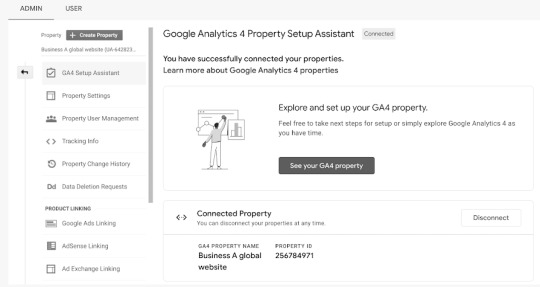
Once added, the connection can be confirmed by navigating to “Account Settings” and then “Linked accounts.” The “View details” section will show the link.
The account can also be linked to Webmaster Tools, which will show how ads and the organic listings perform.
Google Merchant Center:
To execute Google Shopping campaigns, also known as PLAs, the Google Merchant Center account needs to be linked with Google Ads. Just like with Google Analytics, the Google Ads ID should be inputted in the “Settings” area of the Merchant Center account. The account information for Merchant Center will be displayed in the “Tools” section of Google Ads once the connection is established.
Pay Per Click Advertising Remarketing:
Establishing the Google remarketing code involves a straightforward procedure. The remarketing tag is located within the Shared Library and must be copied onto each page of the website before the closing </body> tag. To ensure accuracy, the code can be verified by revisiting the Shared Library.
Pay Per Click Advertising Extensions:
Ad extensions serve as extra links and details that provide additional information about your business, thereby enhancing the basic PPC ads. While some ad extensions can be manually selected and controlled by you, search engines may also generate certain ad extensions automatically. The primary benefit of ad extensions lies in their ability to boost the click-through-rate (CTR) of the ad headline, as they increase the size of the ads and make them more noticeable on the search engine results pages (SERPs). Numerous ad extensions are available to choose from.
Sitelink Extensions:
Sitelink extensions provide extra links for users to explore more pages on your site, and they are manually inserted in Google and Microsoft interfaces. It is important for sitelinks to be related to the search query, and they can also feature descriptions called enhanced sitelinks.
Location Extensions:
Brick and mortar businesses can greatly benefit from using location extensions. These extensions display the business address and can be utilized on both Google and Microsoft platforms. However, it is important to note that in order to use location extensions on Google, a Google My Business account must be set up and linked to Google Ads.
Call Extensions:
Advertisers have the option to utilize call extensions on both Google and Microsoft platforms, providing two different opportunities. These extensions enhance ads on mobile devices by allowing users to easily make a call with a click, making it convenient for mobile searchers to contact the business. It is important to note that call extensions are now included in Google Ads’ dynamic ad extension choices. If phone calls do not benefit your business, it may be wise to disable this feature.
App Extensions:
Google offers a useful feature called app extensions or application extensions, which is beneficial for businesses aiming to boost application downloads and user engagement.
Consumer Ratings Annotations:
Consumer rating extensions are allocated selectively to specific businesses and industries at Google’s discretion.
Seller Ratings Extensions:
Seller Ratings function akin to consumer ratings, automatically sourced by Google from reputable website reviews.
This extension considers the entire business process as well. Companies that effectively implement rating and review extensions establish procedures to regularly request feedback from customers. Search engines also implement procedures to detect fake reviews. A key aspect of this process is the natural progression of ratings. For instance, if a company were to receive fifty 5-star ratings in a single month, it would raise suspicions of potential fraudulent reviews to search engines.
Pay Per Click Advertising Tools:
PPC is an amazing field to work in. The primary goal of search engines is to maximize revenue, and as account managers, it is our responsibility to handle the spending. Search engines are motivated to keep budget managers satisfied and offer tools to justify increasing expenditure. Let’s take a look at some tools that can enhance the effectiveness of a PPC campaign.
Pay Per Click Advertising Change History:
Historical modifications are accessible in Google Ads and Microsoft Advertising, documenting previous changes such as bid adjustments and sitelink inclusions. The information contains the username or email associated with the alteration and the timestamp of the adjustment. It is possible to export the change history.
Keyword Planner:
The Keyword Planner, a feature available on Google Ads, assists in identifying and organizing campaigns, keywords, and ad groups. It also offers performance data estimates that can be utilized to determine initial bids and budgets for PPC accounts.
Display Planner:
The Display Planner serves as a valuable resource for designing Display Network campaigns. It provides a comprehensive list of websites, keywords, topics, and interests that are relevant to your target audience. By utilizing this tool, you can discover numerous new websites, apps, and video channels that are recommended for your campaign.
Pay Per Click Advertising Preview and Diagnostics:
The Ad Preview and Diagnostics tool assists in determining the reason why your ad may not appear for a specific search term, and can be accessed through the Google Ads Interface. Simply input the location and language, and the tool will analyze in the background to provide results.
Pay Per Click Advertising Opportunities:
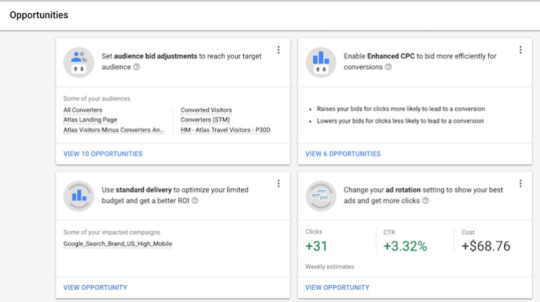
Pay Per Click Advertising Labels:
Labels serve as virtual sticky notes and embedded documentation for campaigns, ad groups, keywords, and ads. They offer versatility, allowing for various applications such as indicating ad creation dates or identifying top-performing keywords. Labels prove particularly valuable in accounts managed by multiple individuals or when dealing with distinct segments that have different objectives. By correctly implementing labels, evaluating the performance of a particular initiative becomes significantly more streamlined.

Pay Per Click Advertising Automated Rules:
Google Ads features exclusive automated rules that can be configured based on various performance metrics and scheduled to run accordingly. These rules aim to streamline account management, yet human oversight should not be entirely replaced. It is advisable to establish performance thresholds or safety rules to address any potential decline in performance.
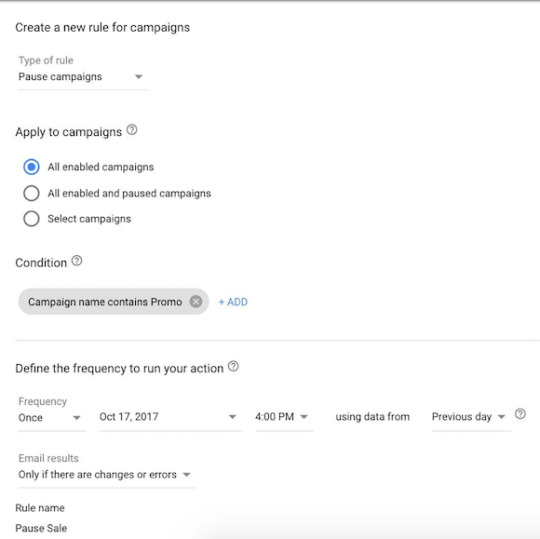
Pay Per Click Advertising Shared Library:
The Google Ads shared library allows advertisers to manage changes across multiple campaigns.
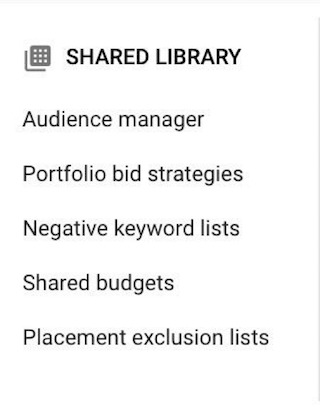
Audiences:
Audiences can be added to Display, Remarketing, and Remarketing Lists for Search Ads campaigns.
Pay Per Click Advertising Bid Strategies:
Automated bidding strategies, known as bid strategies, involve relinquishing control to the search engine to adjust auction bids based on preset goals. These bid goals are established in the shared library, allowing the search engine to utilize algorithms for bid adjustments. Various strategies can be implemented at both the campaign and ad group levels.
Enhanced CPC
Target Search Page Location
Target CPA
Maximize Clicks
Target Return on Ad Spend (ROAS)
Maximize Conversions
Pay Per Click Advertising Budgets:
In most cases, daily budgets are allocated for each campaign. However, there are instances when you may need to reallocate these funds based on campaign performance. The shared budget feature eliminates the need to manually manage and monitor individual campaign budgets. By using a shared budget, Google Ads will automatically adjust the budget for the entire account or a group of campaigns within the account.
Pay Per Click Advertising Campaign Negative Keywords:
Managing negative keywords through the shared library is a time-saving practice for adding them to multiple campaigns. Account managers often have standard lists of adult terms or industry exclusions that can be maintained in the shared library, allowing for efficient management. These lists can be applied account-wide or to specific campaigns within the account.
Pay Per Click Advertising Campaign Placement Exclusions:
Similar to negative keywords, certain websites in Display campaigns have low conversion rates. By including a list of campaign placement exclusions, this list can be shared across multiple Display campaigns.
Pay Per Click Advertising Reporting:
Pay Per Click Advertising Search Query Reports (SQRs):
Search query reports are incredibly valuable and represent a key optimization method. By running SQRs on Google and Microsoft, irrelevant search queries can be identified and added as negative keywords. Furthermore, these reports can uncover fresh ideas for expanding keywords. It is advised to conduct SQRs at least twice a month.
Pay Per Click Advertising Placement Reports:
Placement reports display the websites in the Display network where your ad has appeared. You have the option to modify bids for specific websites or block websites that are generating traffic with low conversion rates. It is recommended to conduct a placement report at least biweekly.
Pay Per Click Advertising Auction Insights Report:
This report, available in Google Ads, is utilized to identify the companies that are vying against your business in the search auctions. The Auctions Insights Report provides valuable insights into your impression share compared to your competitors, helping you decide whether to boost bids and/or budget to enhance competitiveness in the auction. Additionally, it helps in recognizing if you are competing with businesses from different industries, prompting the need to incorporate negative keywords in your campaigns or reevaluate the keywords you are bidding on.
Pay Per Click Advertising Segmentation Options:
When generating reports in search engines, you will always find the ability to segment your data further. You have the option to segment by device, time, network, and various other criteria. With numerous options available, you can achieve the level of detail you need. These segmentation features can be accessed on multiple tabs within Google Ads. Keep in mind that certain segments may only be applicable to specific subsets of data, while others can be discovered after downloading the report from the interface.
Pay Per Click Advertising Filters:
Filters are a valuable feature in both Google Ads and Microsoft Advertising, allowing users to create and save filters for efficient campaign analysis. These filters prove particularly beneficial when dealing with extensive campaigns, as they enable users to break them down into smaller, more manageable segments. By filtering based on various performance data, users can easily make bid adjustments or take other actions to align with their objectives.
Pay Per Click Advertising Columns:
Columns serve as an additional cross advertising platform element that displays predetermined metrics. They are customizable on all tabs across the engine interfaces, allowing for the inclusion of various data points like assisted conversions, competitive impression share metrics, conversion data calculations, and more. Columns provide a valuable tool for tailoring the interface to meet your specific goals and analytical requirements.
Pay Per Click Advertising Display Network:
The Display Network offers a valuable opportunity to increase traffic volume compared to search. While the average cost per click is typically lower on the Display Network, the quality of traffic may not always be as high. It is crucial to thoroughly test all targeting options within the Display Network to guarantee the arrival of high-quality traffic.
Pay Per Click Advertising Targeting Options:
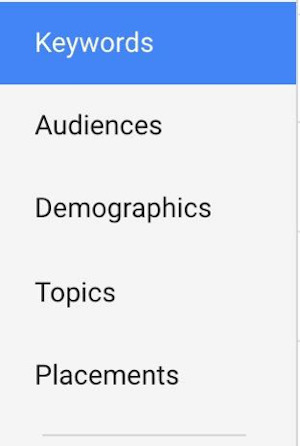
Display Keywords:
Utilizing keywords on the Display Network is known as contextual targeting. These keywords align your ads with websites that share similar themes. For example, the Display keyword “shoes” will be matched with any website that Google identifies as being related to shoes. Unlike search keywords, these keywords are not interpreted literally and are all classified as broad match. Keywords within an ad group function more like a theme. Display keywords can be utilized independently or in conjunction with other targeting methods to narrow down the scope and enhance quality.
Placements:
Placements refer to the specific websites or platforms where your Display ads are displayed. You have the option to allow Google Ads to automatically select placements based on your targeting preferences, or you can manually choose the placements where your ads will appear. When you manually select placements, they are referred to as “Managed Placements.”
Topics:
Display Topics are categories that can be selected to help Google locate websites that align with those categories for displaying your ads. Topics function similarly to display keywords, but instead of creating your own keywords, you select a predefined theme. While display keywords allow for bidding at the keyword level, Topic targeting only allows for bidding at the Topic level. When analyzing Placement reports for Topic targeting, it is important to assess whether the website truly corresponds to the intended theme for the placement.
Interests:
Interests and Topics share many similarities, as they both revolve around specific themes. Nevertheless, the main distinction lies in their focus: Topics are aimed at websites, while Interests are aimed at users. Google determines user interests by analyzing browsing history or self-selected preferences when users are signed in to their Google account. This enables your ads to be displayed on any website that aligns with the interests of your target audience, regardless of the site’s content.
Demographics:
Utilizing demographic targeting enables you to adopt an audience-centric strategy for delivering ads. This feature allows you to modify bidding or restrict your audience according to factors that may influence purchase intent, such as age, gender, parental status, or household income. Gender targeting operates comparably to interest targeting, focusing on the user’s gender using data obtained from their browsing history or their self-identified gender when logged into Google. If you’re marketing a product or service that exhibits varying performance based on gender, this feature is worth testing.
Age:
Age targeting functions similarly to Gender targeting, but it focuses on the user’s age rather than their gender. It is important to be cautious when using both of these demographic targeting strategies. In certain scenarios, like a shared family computer, Google may inaccurately determine the demographics of the users.
Parental Status:
Completing the range of demographic targeting choices is the latest inclusion, known as “Parental Status”. This feature enables the targeting of users based on whether they have children, which can prove highly advantageous when promoting a product or service to parents, such as the sale of baby furniture.
Pay Per Click Advertising Options:
Responsive Ads:
Text-based promotions known as responsive ads are designed to seamlessly fit into various ad spaces. By combining text with relevant imagery, these ads can appear as native content, enhancing their effectiveness by seamlessly blending in with a publisher’s website. Additionally, the reach of these ads is maximized through dynamic adjustments to meet the specific requirements of each ad placement.
Image:
Image advertisements are considered the more conventional form of Display advertisements, as they are exclusive to this particular network. You have the option to upload your own image ads using either the interface or Google Ads Editor. It is important to note that there are various sizes of images that can be used on the Google Display Network. Before uploading, make sure to verify the file size and image resolution to prevent any potential errors.
Pay Per Click Advertising Remarketing:
Basic Remarketing:
The concept behind remarketing suggests that individuals who have previously visited your website are more inclined to make a purchase when they return. However, they may be less likely to click on your advertisement for a second time if they are not already interested in making a purchase.
Dynamic Remarketing:
In order to make use of Dynamic Remarketing, it is essential to have a Google Merchant Center. By connecting this feature to your Merchant Center data feed, you can create personalized ads using product images and details based on the products users have previously seen.
Remarketing Lists For Search Ads (RLSA):
Remarketing Lists for Search Ads (RLSA) function similarly to display remarketing by targeting previous site visitors based on their browsing behavior. Custom combinations can be created for more targeted campaigns. The key difference is that RLSAs target users through Search rather than display.
Dynamic Search Pay Per Click Advertising:
To prevent mixing up search queries, add all non-low search volume keywords currently enabled in your account as negative keywords for your Dynamic ads. Select this campaign type in the settings and ensure you create a dynamic ad type. Focus on your targets by writing targeted ad copy and adjusting bids/budgets accordingly based on categories, URLs, page titles, or page content. Exclude pages on your site that you do not want to be used for ads, such as those containing the phrase “out of stock”. Use the “+ Exclusions” button under the dynamic ad targets section of the auto targets tab.
Conclusion:
This guide provides an excellent introduction to the realm of PPC. It covers all the essential aspects you need to know when starting or delving into PPC accounts shortly after their launch. Nevertheless, the unofficial mantra of the PPC industry is “always be testing.” It is crucial to experiment with various features and strategies for your account. Each account is distinct and will respond differently to different features and strategies. While there are established best practices that generally yield positive results for most accounts, you can only truly ascertain their effectiveness through testing.
Visit: https://chennaiwebsitedesigner.in/
#AdBudget#AdCampaigns#AdCopy#AdMetrics#AdPerformance#AdTargeting#ConversionRate#CTR#DigitalMarketing#DisplayAds#GoogleAds#KeywordResearch#OnlineAdvertising#PaidSearch#PPC#ROI#SearchAds#SEM#SocialMediaAds#TargetAudience
0 notes
Text
Are you looking for a Google Search Ads Management Services?
Unleash Your Business Potential with Google Search Ads: Reach, Convert, Thrive! #googlesearchads #googlesearchadsservices #searchadbestpractices #searchadagency
1 note
·
View note
Text

Digital firms are occupied with a monstrous battle to rank higher for watchwords. Indeed, even out the chances with SEO Resellers Canada. https://seoresellerscanada.ca/what-is-digital-advertising-definition-types-and-strategies/
#DigitalAdvertising#OnlineMarketing#AdvertisingStrategies#DigitalMarketing#PPC#SocialMediaAds#DisplayAds#SearchAds#MarketingTips#SEOServices
0 notes
Text

Are looking for a way to Increase your Sales?
Then Grow your business with Google Ads
I will setup and manage your Google Ads AdWords PPC campaign
My Services Includes:
Structuring your Google Ad Account based on your Website
Keywords Research (Short tail and long tail)
Structuring Ad Groups in Proper Keywords
Setup Search Campaign in Google Ads based on your Website goals
Ads Development (Responsive & Text Ads)
Negative Keywords List to avoid unwanted traffic
Keeping a close eye on Search terms to update search KW & Negative list
Choosing the right bidding strategy
Conversing tracking using GTM to track leads and sales
Remarketing Tag on all web pages (for retargeting)
Setting up proper Ad extensions at campaign, ad group and ad level
Landing Page Optimization (if applicable)
Targeting right audience
Smart Search Campaign
Results You Can Expect:
Highly relevant traffic on your website
Keywords with a good Quality score
Smart Shopping Campaign
Hire me: https://www.fiverr.com/sapi1985
0 notes
Text
Get Quality Real Estate Leads from 199* | Call 9278222000 Now!
"Unlock the potential of quality real estate leads from just 199*. Reach out to us at 9278222000 to get started on maximizing your business opportunities today."
Call to Action: "Call us on 9278222000"
Visit: https://www.brandshine.in/

#RealEstateLeads#LeadGeneration#DigitalMarketing#BusinessGrowth#GoogleAds#FacebookAds#B2BLeadGeneration#B2CLeadGeneration#LeadGenerationAgency#SearchAds#DisplayAds#MakingYourBrandShine#BrandShine
0 notes
Text
Look no further than IT Upsider - your trusted partner for Google Ads campaigns in Punjab. With a proven track record of delivering impactful results, we specialize in creating tailored strategies that drive traffic, leads, and conversions.
#GoogleAdsPunjab#ITUpsiderAds#DigitalMarketingPunjab#OnlineAdvertising#PPCExpertise#GoogleAdsCampaigns#PunjabMarketing#ITUpsiderPromotions#SearchAds#DisplayAds#PPCManagement
0 notes
Text
I will setup Google ads for plumbing service to get phone calls
#GoogleAds#GoogleAdsCampaign#GoogleAdsSpecialist#GoogleAdsExpert#GoogleAdWords#GoogleAdsManager#GoogleAdsPPC#GoogleAdWordsPPC#PPC#SEM#PayPerClick#GoogleAdsSetup#GoogleCampaign#AdWordsPPC#GooglePPC#GoogleSearch#Advertising#GoogleAdWordsSetup#ManageGoogleAds#PPCCampaign#GoogleSearchAds#SearchAd#AdCopy#AdText#GoogleManagement#GoogleTagManager#ConversionTracking#RemarketingAd#TextAds#KeywordSearch
0 notes
Text
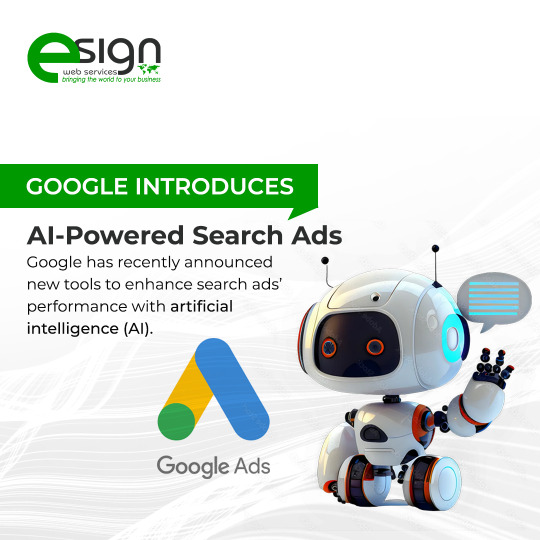
Google Introduces AI-Powered Search Ads
Google has recently announced new tools to enhance search ads’ performance with artificial intelligence (AI).
Helpful, isn’t it? Tell us in the comment section.
#googleads#AIpowered#searchads#ppc#searchenginemarketing#googlesearchads#adwords#digitalmarketing#digitalmarketingexperts#digitalmarketingagency#esignwebservices
0 notes
Text
Google vs. Meta: Unraveling the Best Platform for Running Your Ads

In the vast realm of digital advertising, two giants stand tall: Google and Meta (formerly known as Facebook). Both platforms offer unparalleled opportunities to reach your target audience, boost brand visibility, and drive conversions. However, choosing between them can be a daunting task. In this article, we'll explore the merits of each platform to help you make an informed decision for running your ads.
1. The Power of Google Ads:
Google Ads is the undisputed king of search engine advertising. It allows businesses to display their ads on Google's search results pages, partner websites, and YouTube. Here's why Google Ads could be the right choice for your marketing endeavors:
a) Intent-based targeting: With Google Ads, you can target users based on their search queries, ensuring that your ads are displayed to potential customers actively seeking products or services similar to what you offer.
b) High-intent audience: Google users typically have high intent as they are actively searching for solutions, making them more likely to convert into customers.
c) Extensive reach: Google processes billions of searches every day, offering a vast audience pool to tap into.
d) Diverse ad formats: Google Ads provides various ad formats, including text ads, display ads, shopping ads, and video ads, catering to different marketing objectives.
2. The Allure of Meta Ads:
Formerly known as Facebook, Meta is the world's largest social media platform, boasting over 2.8 billion monthly active users. Here's why Meta Ads could be your ticket to success:
a) Highly targeted demographics: Meta excels in providing advanced targeting options based on user demographics, interests, behaviors, and connections, allowing you to reach your ideal audience precisely.
b) Visually engaging content: Meta ads thrive on visually appealing content, including images and videos, allowing brands to craft captivating and shareable ads.
c) Social proof and engagement: Meta allows users to interact with ads through likes, comments, and shares, helping to build social proof and amplify brand reach.
d) Retargeting capabilities: Meta's pixel and tracking features enable you to retarget users who have already engaged with your brand, fostering stronger connections and encouraging conversions.
3. Consider Your Objectives:
The decision of whether to choose Google Ads or Meta should largely depend on your advertising goals and target audience.
a) Consider Google Ads If:
Your primary focus is on capturing high-intent users actively searching for your products or services.
You want to leverage Google's vast search network and display ads to showcase your offerings.
You aim to drive immediate conversions and ROI through search engine marketing.
b) Consider Meta Ads If:
You want to build brand awareness and engage with a vast user base.
Your products or services cater to a younger, social media-savvy audience.
You have visually appealing content that can captivate users and generate shares.
4. Combining Both Platforms:
For some businesses, utilizing both Google Ads and Meta Ads in a harmonious advertising strategy can yield impressive results. By doing so, you can cover a broader spectrum of the digital landscape and cater to users at different stages of their customer journey.
Conclusion:
Choosing between Google and Meta for running your ads is a crucial decision that requires a deep understanding of your target audience, marketing objectives, and available resources. While Google Ads excels in capturing high-intent users, Meta offers exceptional demographic targeting and visual engagement. Ultimately, a well-rounded approach that leverages the strengths of both platforms might be the key to unlocking your advertising success. To make the most of your investment, consider seeking assistance from a reliable and experienced Facebook ads management agency in Delhi, specializing in digital marketing services, and let the experts guide your brand to new heights of advertising excellence.
#paidadvertising#paidmarketing#google#googleadwords#displayads#searchads#videoads#facebook#metaads#facebookads#facebookmarketing
0 notes
Text
https://www.fiverr.com/s/XkqdR0
#gooleads#googleadsexpert#displayads#searchads#googleadwords#ppc#advertisement#googleadsmanagement#googletagmanager#googleanalytics#ecommerce#marketingagency#googleadscampaign#digitalmarketingagency#googlemerchantcenter#fixgmc#ga4#gtm#tracking#ecommercetracking
0 notes
Video
Google understands that advertisers are faced with many demands. It’s not uncommon for you to be working on multiple platforms simultaneously.
The new Search Ads 360 redesign is now built on the same platform as Google Ads.
Stay updated for more such interesting facts,
& for any digital marketing requirements for your business, contact us.
Link below
https://www.digistart.in/
#digistart#searchads360#microsoft#advertisers#googleads#searchads#searchengineoptimization#userexperience#seostrategies#seotips#digitalmarketingtips#digitalmarketingstrategies#digitalmarketing#digital ads
0 notes